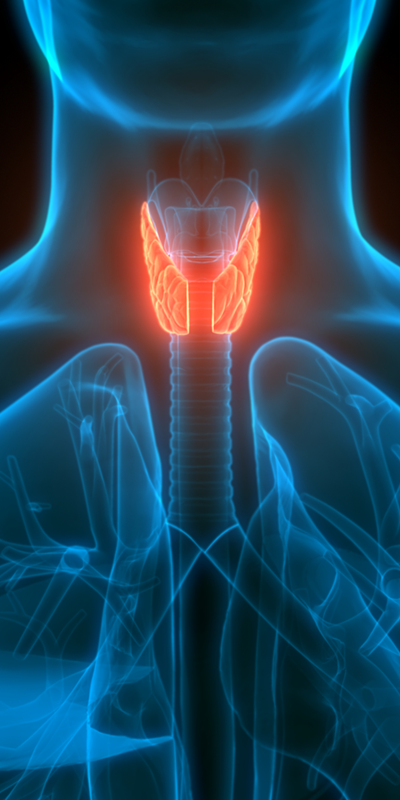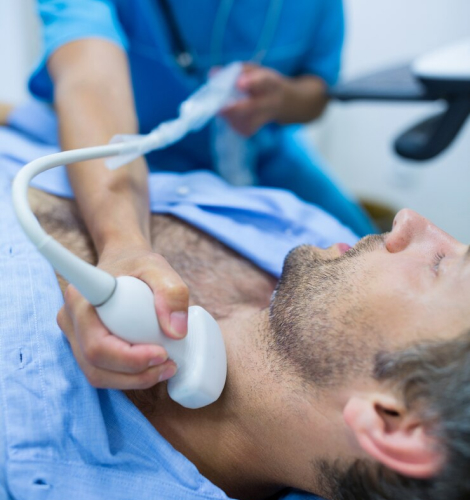Surgery is considered a revision parathyroidectomy when:
- A previous parathyroidectomy surgery has been performed but:
- The patient was never cured.
- The patient was cured for a period of at least 6 months, but later developed primary hyperparathyroidism again (from a different parathyroid gland).
- A previous thyroidectomy (hemi or total) has been performed.
When either of these surgeries has been performed in the past, it presents unique risks when performing a revision parathyroidectomy:
- Scar tissue will be present from the prior surgery which complicates the surgical dissection and increases the risk of injury to nearby important structures.
- The risk to injuring the Recurrent Laryngeal Nerve controlling your voice and swallowing is roughly doubled:
- 10% (from normally 5%) for temporary weak and hoarse voice lasting days, sometimes up to 9 months.
- 2% (from normally 1%) for permanently weak and hoarse voice.
- The risk to injuring the Recurrent Laryngeal Nerve controlling your voice and swallowing is roughly doubled:
There could have been injuries to nearby structures during the previous surgery.
- If the recurrent laryngeal nerve was permanently damaged on one side during the previous surgery, injury the opposite recurrent laryngeal nerve during a revision parathyroidectomy could result in significant difficulty breathing and the need for a tracheotomy tube (temporary or permanent) in the neck to save the patient’s life.
- Therefore, even if the patient’s voice sounds normal following the first surgery, a flexible laryngoscopy (fiberoptic camera exam to evaluate the vocal cords) is essential to perform before a revision parathyroidectomy to ensure that there is no permanent vocal cord paralysis from the first surgery.
- If vocal cord paralysis is discovered, the decision to perform a revision parathyroidectomy must be very carefully made between the patient and surgeon, understanding the very real risk of requiring a tracheotomy tube.
- During the previous surgery, parathyroid glands may have been purposefully removed to try to cure the patient, accidentally removed (sometimes noted in the pathology report), and/or damaged.
- This means that there may be fewer functioning parathyroid glands present, and the risk for damaging or removing all remaining parathyroid glands resulting in permanently low calcium levels is much higher than a typical parathyroidectomy.
- The risk for permanently low calcium for a standard parathyroidectomy is ~1%, but for revision parathyroidectomy it may range from ~ 2 – 5% depending on how many parathyroid glands were previously removed / injured.
- This means that there may be fewer functioning parathyroid glands present, and the risk for damaging or removing all remaining parathyroid glands resulting in permanently low calcium levels is much higher than a typical parathyroidectomy.






